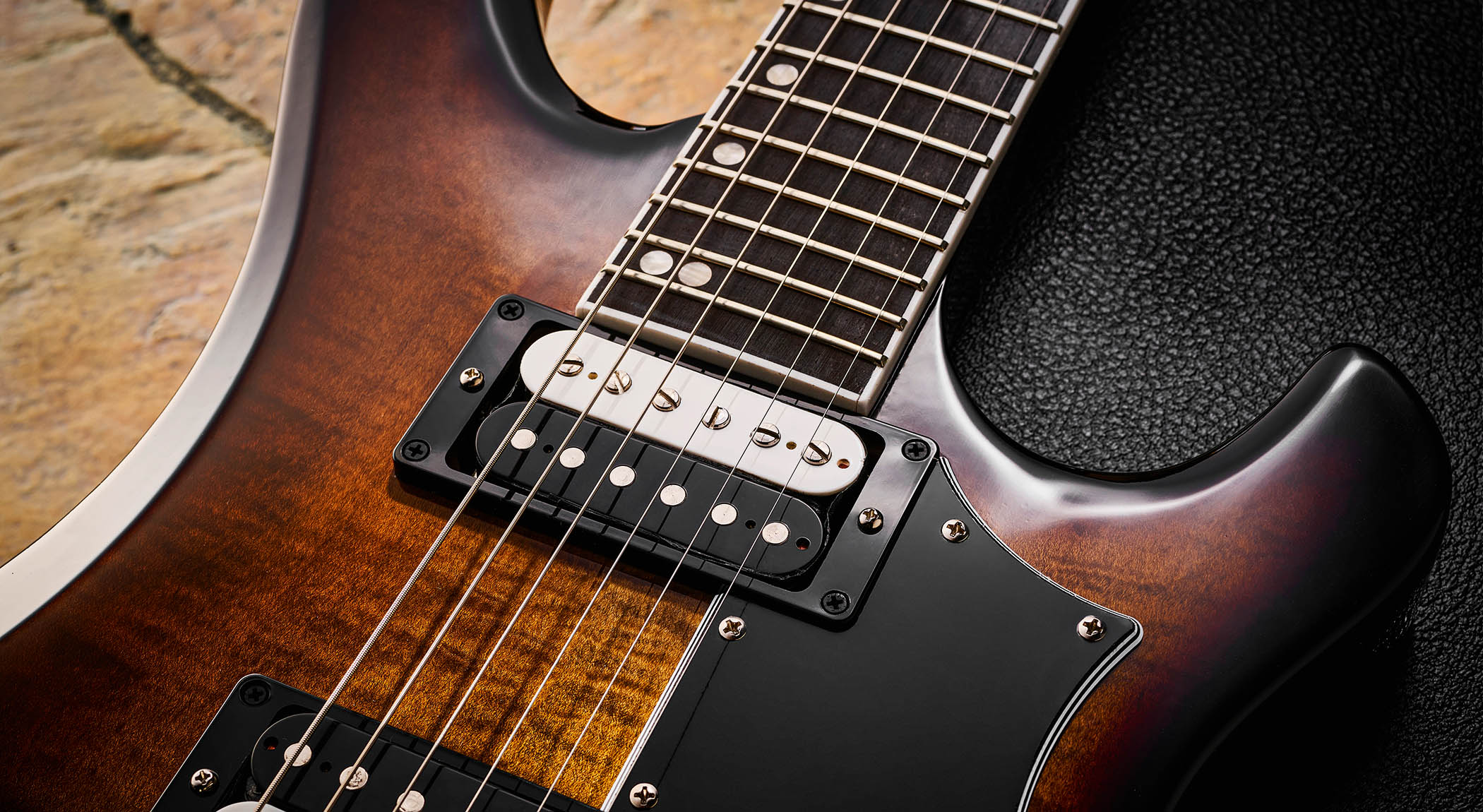
What is it?
It’s tough for brands like Gibson and Fender, who hit bullseye with models such as the Les Paul, ES-335, Stratocaster and Telecaster, to bring something new to the table. Witness Fender’s Coronado and Starcaster semis, which had neither the operational brilliance of the ES-335 nor the ‘cool kitsch’ of Gretsch’s offerings.
Then we had Gibson’s late-70s missteps with the RD, Marauder and more. But many of these past failures have seen something of a resurgence, usually when picked up by some cool new player or by a guitar builder who twists old designs into something fresh.
Yet, however hard Gibson tried to promote the original Victory models, they were dropped after less than three years. Perhaps the world just wasn’t ready yet. But look at PRS’s recently revamped Vela, with its offset styling and chamfered edges, and you’ll see that the Victory’s style is alive, well and very much in vogue.
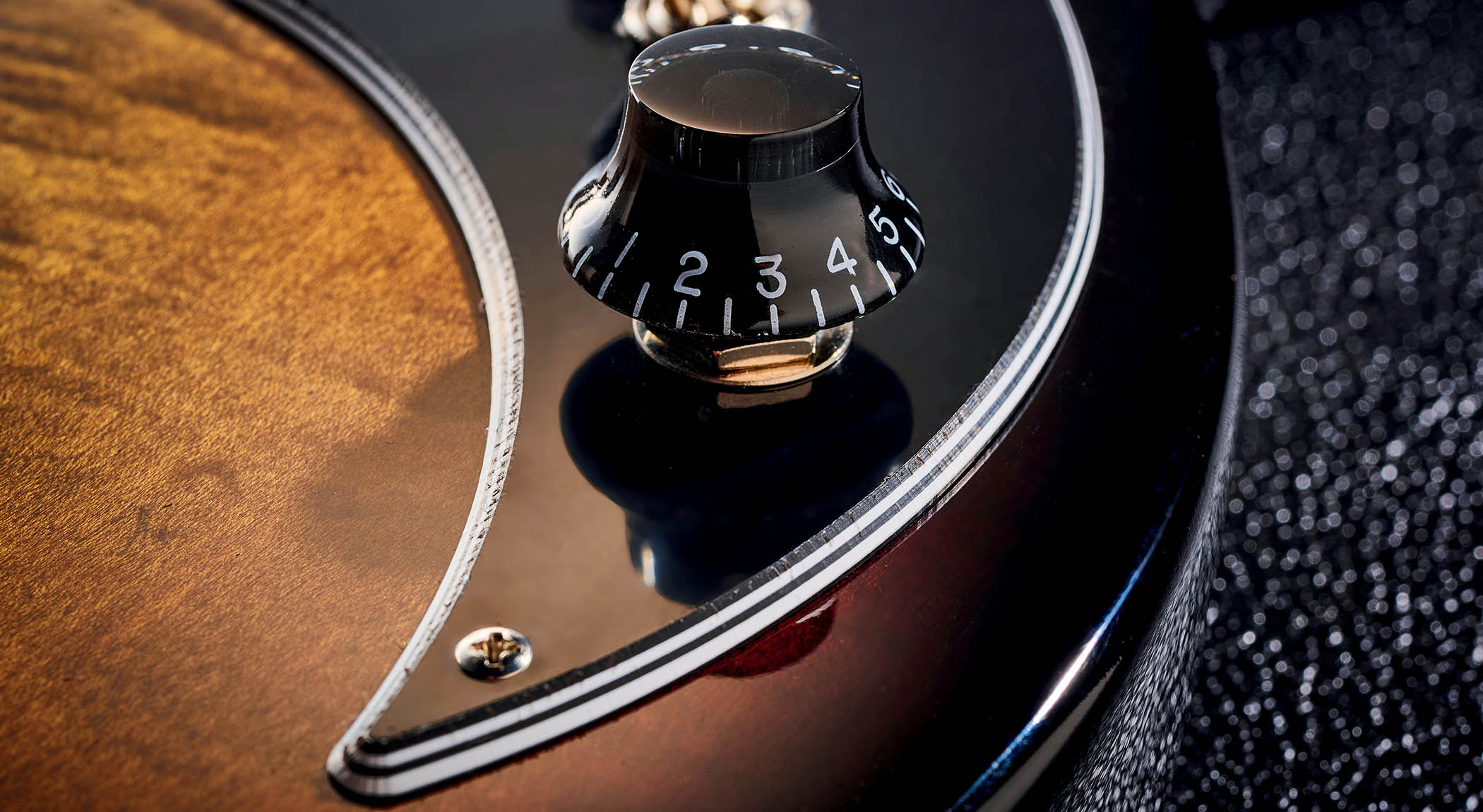
The very last design to come out of Gibson’s 225 Parsons Street, Kalamazoo home as the combined effort of designer Chuck Burge and pickup guru Tim Shaw, 1981’s Victory MVII was intended to take on Fender’s country mainstay the Telecaster, while the three-pickup Victory MVX offered a Strat-alike option.
It originally came with an all-maple construction – unlike today’s, which uses the company’s more traditional mahogany on the base model and adds an AA maple cap on the Figured Top version, as here.
Specs
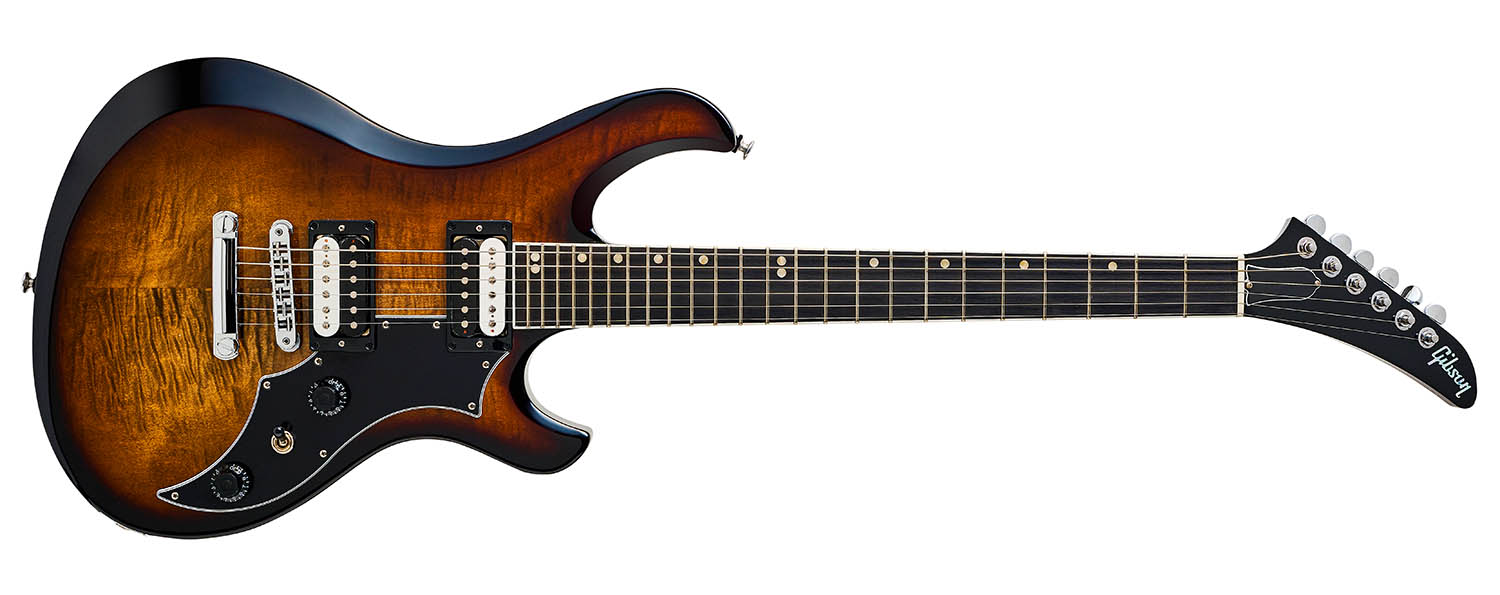
PRICE: $1,999/£2,199/€1,999
ORIGIN: USA
TYPE: Double-cutaway, solidbody electric
BODY: Mahogany with 2-piece AA figured
maple top
NECK: Mahogany, SlimTaper profile
SCALE LENGTH: 648mm (25.5”)
NUT/WIDTH: Graph Tech /43mm
FINGERBOARD: Bound ebony, acrylic dot markers, compound 254-406mm (10-16”) radius
FRETS: 24, medium jumbo
HARDWARE: Gibson ‘Nashville’ tune-o-matic bridge and aluminium stud bar tailpiece, 6-in-a-line Grover Mini Rotomatic tuners; chrome plated
STRING SPACING, BRIDGE: 51.56mm
ELECTRICS: Gibson 80s Tribute neck and bridge humbuckers, 3-way toggle pickup selector switch, master volume with push/pull coil-split, master tone with push/pull for inner/outer coil selection
WEIGHT (kg/lb): 3/6.61
OPTIONS: N/A
RANGE OPTIONS: The base-model Victory (£1,749) is all-mahogany with solid Dark Green, Dark Walnut or Gold Mist satin finishes; Victory Figured Top Exclusive (£2,199, online only) in Translucent Ebony Burst
LEFT-HANDERS: N/A
FINISH: Smokehouse Burst (as reviewed),
Red Wine Burst, Iguana Burst
CONTACT: Gibson
Build quality
Build quality rating: ★★★★☆ (half stars indicated with ½)
It has to be said that the grain on ours isn’t amazing, and the two halves aren’t very well matched, but we did spot some spectacular lookers online. Nevertheless, it’s still rather tasty in this Smokehouse Burst, gloss nitro finish.
The 1981 Victory retained Gibson’s traditional set neck but aped the Tele’s control layout, albeit with a coil-split to elicit some spankier tones from its twin humbuckers. Rather than retaining the early Victory’s vaguely Firebird-ish headstock, the new guitar has Gibson’s Concorde-nosed Explorer peghead, with six-a-side Grover Mini Rotomatic tuners.
Other tweaks include refined body contours, a deep neck heel carve, improved weight and balance, a shift from Gibson’s 639mm (24.75 inches) to a more Fender-like 648mm (25.5-inch) scale length, and pickups mounted directly into the body, unlike the previous model’s, which sat within the pickguard itself.
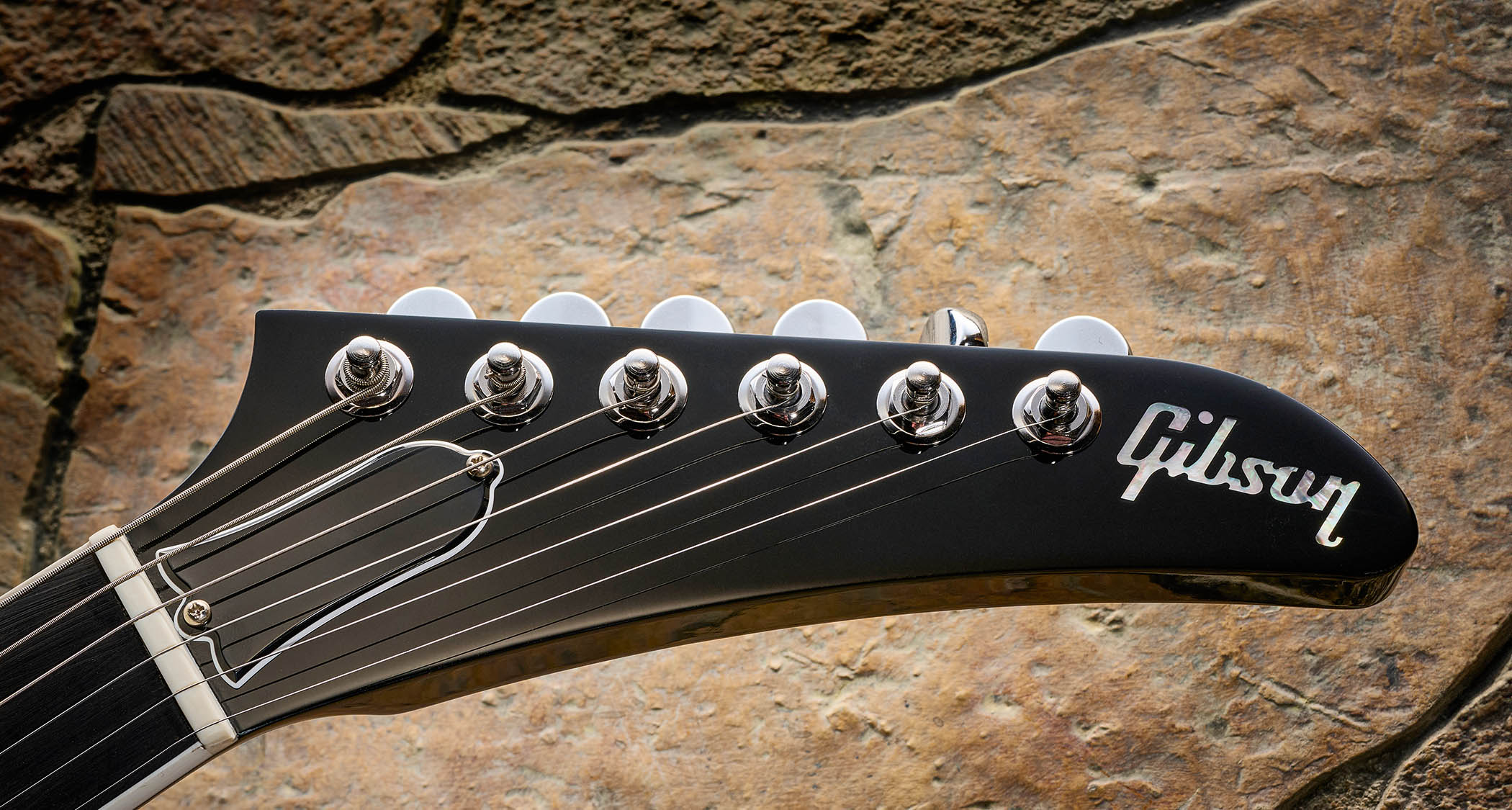
We like the white binding and acrylic dot markers mounted along the fingerboard’s top edge, with double dots at the 12th and 24th frets, since the instrument now boasts a full two octaves’ worth of medium jumbo wires which are well fitted and finished.
Perhaps to enhance its rockier vibe, the ’board also features a compound radius that flattens out from 254mm (10 inches) to 406mm (16 inches) to make fretting out a thing of the past.
Typical Gibson hardware abounds, with tune-o-matic bridge and stud tailpiece, as well as a nicely cut Graph Tech nut, five-ply black and white pickguard, and aluminium strap buttons.
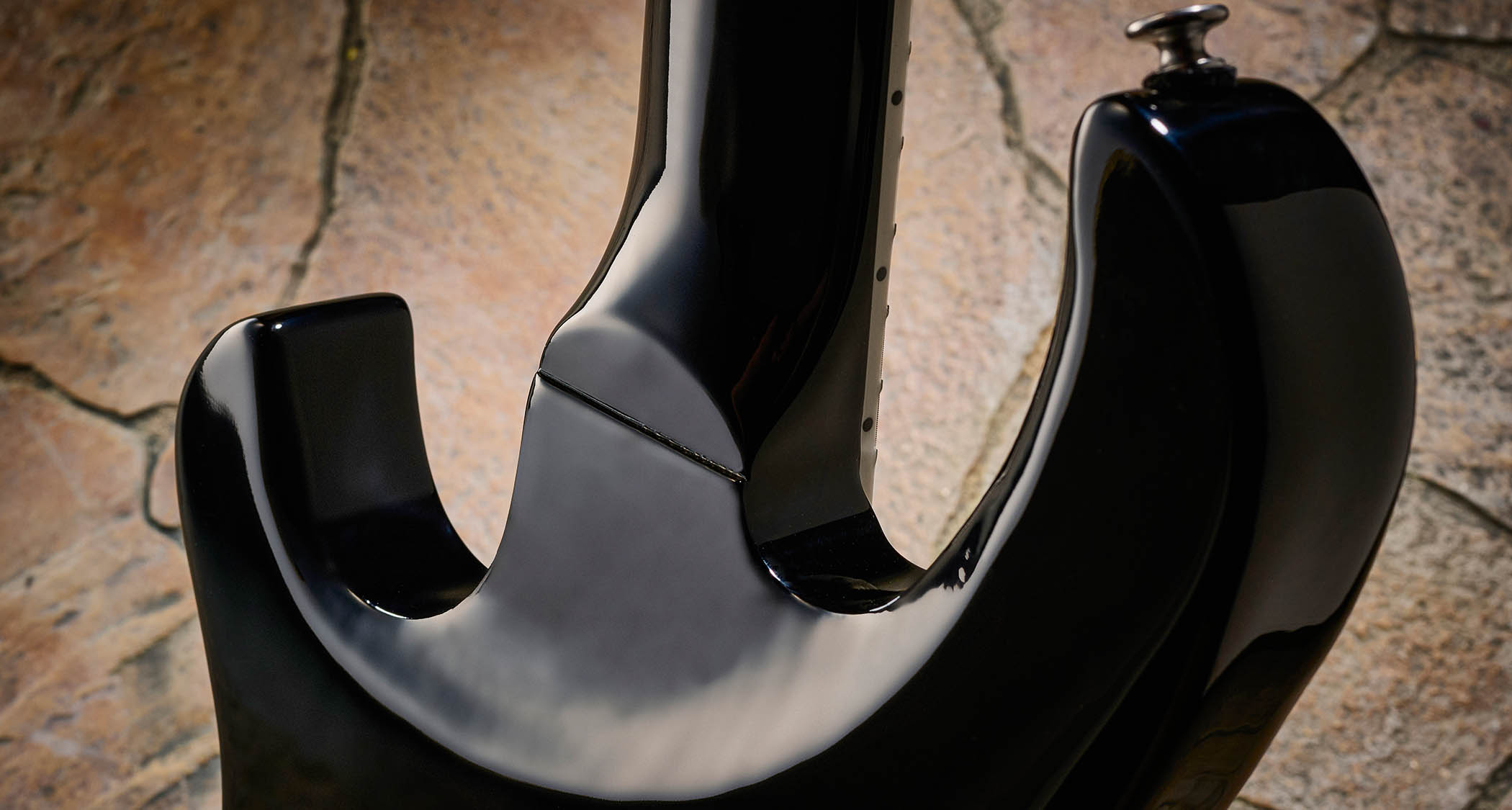
Overall, it’s a good-looking, solidly built and well-finished guitar that doesn’t scream ‘40-year-old throwback’ but is very much an instrument of today
The electronics played an important role in what Gibson hoped would be the original Victory MVII’s success. Here, too, we find a plethora of humbucking and single-coil tones, all accessed by a simple control and switching setup.
Like the earlier version, its twin open-topped humbuckers (these 80s Tribute pickups are said to evoke the fat, powerful sounds of the era) are controlled by master volume and tone pots.
Both offer a pull-switch facility, and while pulling up the volume pot splits both pickups’ coils, the tone knob selects either inner or outer coils when in split mode. However, a smooth, tapered knob is about the worst shape to pull up in the heat of the moment, especially with sweaty fingers holding a pick. So we’d replace these with something grippier.
Playability
Playability rating: ★★★★1/2
Quote text here
With its sleeker, more slender body, just 38mm in depth, and SlimTaper neck, the Victory beckons you to pick it up and play it. All two octaves on each string are accessible by the digitally adventurous, although a tone bend at the 24th fret is something of an achievement.
It’s an easy guitar to become friends with, too; it doesn’t fight back, instead the finely honed neck allows whatever chops you have to flow effortlessly.
We did keep wanting to reach for a non-existent whammy bar, though (the original Victory MVX had one), so perhaps this could be something for further down the line.
Sounds
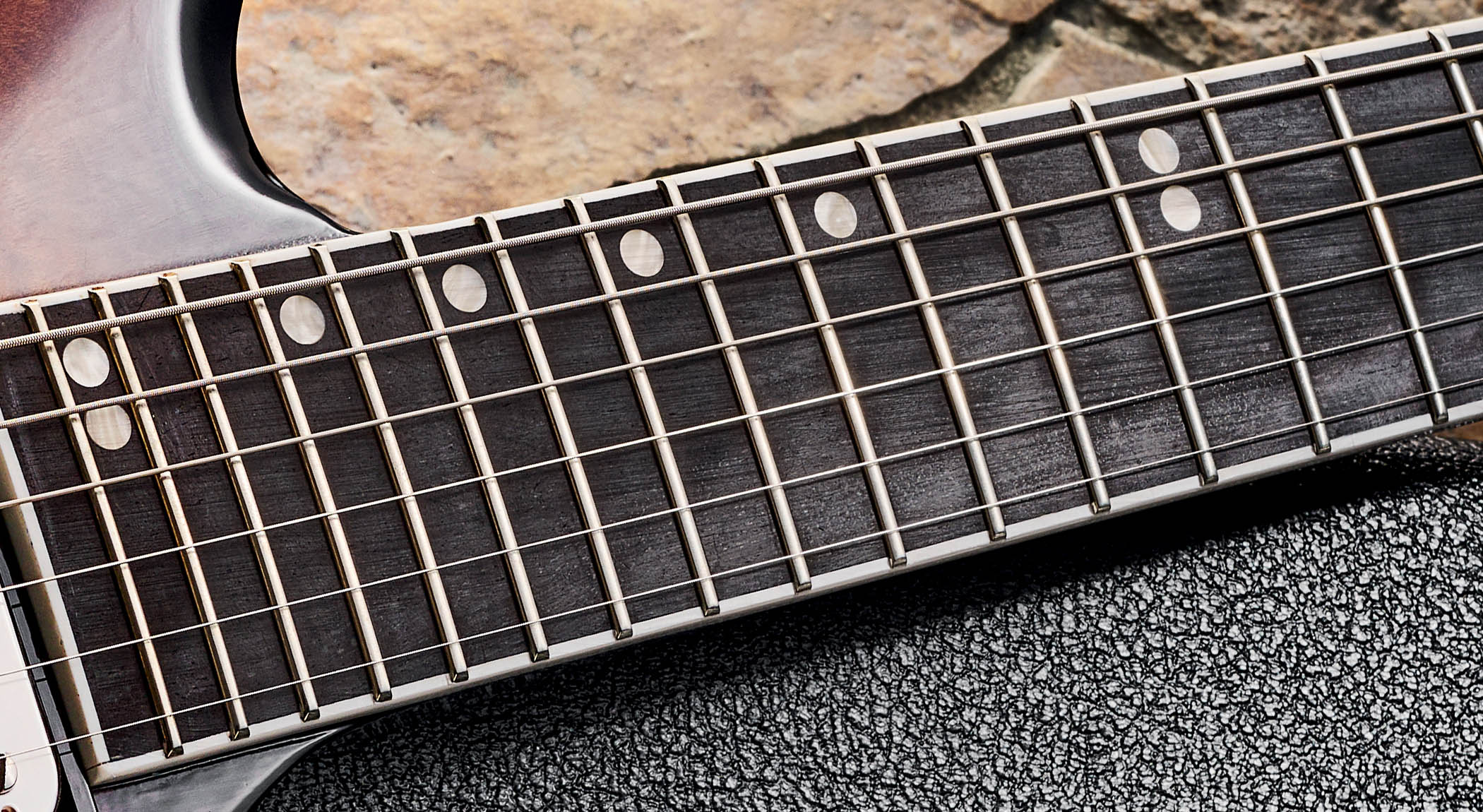
Sounds rating: ★★★★☆
A Boss Katana-50 Gen 3 50-watt combo was our test rig here, as at its heart it’s a simple and great-sounding amp. Using the Katana’s clean and lead settings revealed just how versatile the new Victory is.
With no push-pulls engaged we discover a typical solidbody Gibson voice, but whether it’s the 80s Tribute pickups (voiced for rhythm and lead positions), the mahogany/maple build or indeed both, there’s a harder edge here than you’d find on, say, an SG.
But this suits the guitar’s more aggressive stance and comes into its own when dialling in the gain, when things become smooth, sustaining and vocally articulate.
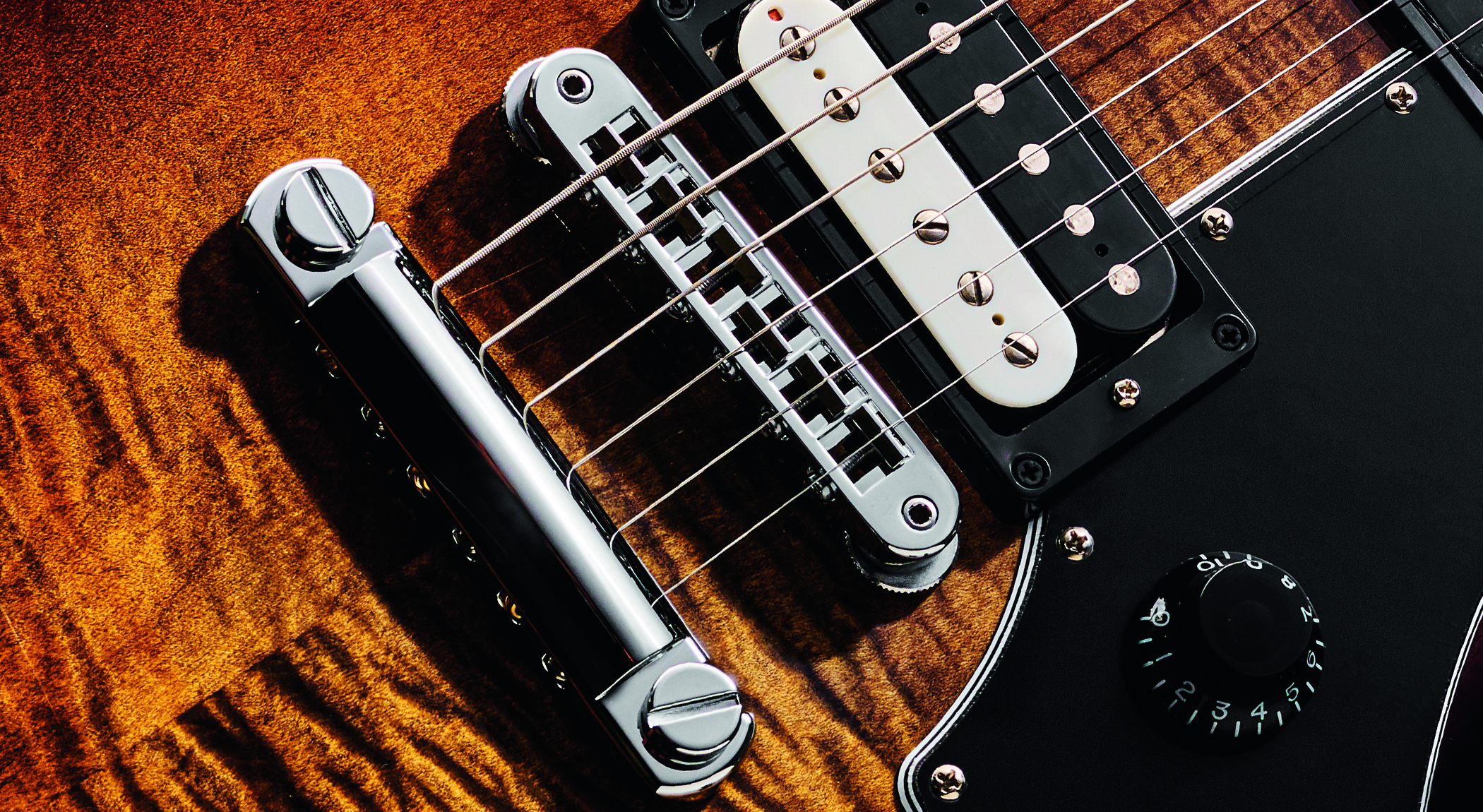
Quote text here
Coil-split mode does not take us straight to Fender world. These aren’t Strat or Tele tones, they’re much more ‘Gibson-lite’, again due to the guitar’s construction and the fact that a Fender single coil is a totally different animal from half of a Gibson humbucker.
Things do become sweeter, though, and whether clean or dirty there’s a ton of versatility here before we even encounter push-pull number two. Essentially, with this pot in its usual resting place the outer (white) coils sound, but when pulled it flips to the inner two.
The tones aren’t markedly different, but with both pickups together we get an almost ‘piezo acoustic’ tone, the bridge becomes a tad more nasal, and the neck offers the least noticeable change. It certainly covers a lot more sonic ground than its almost Jackson Dinky looks might suggest.
Verdict
Put Les Pauls and SGs to the back of your mind. The Victory Figured Top pretends to be neither of these Gibson stalwarts but ploughs its own furrow in this comprehensively upgraded guise.
The improvements wrought in the Victory’s styling, build and switching options send it close to the top of the leaderboard in this hotly contested quarter
Company boss Cesar Gueikian had hinted at the model’s re-emergence on Instagram, and even by playing one on stage. Gueikian clearly sees merit in giving the Victory a second crack of the whip, and we feel the improvements wrought in its styling, build and switching options send it close to the top of the leaderboard in this hotly contested quarter.
Notwithstanding our model’s unremarkable maple cap, the Victory Figured Top is a handsome and versatile instrument that deserves its second chance. Truth is, there’s almost nothing of the original left.
Final Verdict: While this reviewer can’t pretend to have been the old Victory’s biggest fan, Gibson has definitely won him over with this latest and much-improved incarnation of the model.
At around two grand (and a couple of hundred less for the uncapped, satin-finished base model) it’s fairly priced, too, but we can’t wait to see what the almost inevitable Epiphone version brings.
Also try
($1,349 / £1,259)
Yamaha doesn’t flood the market with new guitars, but when they’re this good, you can see why.
Read our review
($499/£499)
A guitar we really can’t fault. Try one of these before someone realizes they’ve made a mistake with the price.
Read our review
($/£1,999)
Gibson calls this new Studio model a “no-nonsense, high-performance tone machine”, and we can’t disagree. With the lighter weight soft-shell guitar case, it’s a shoo-in for any gigging musician.
Read our review
Hands-on videos
Andertons
American Musical Supply
Cream City Music
zZounds
- For more information, head to Gibson.







